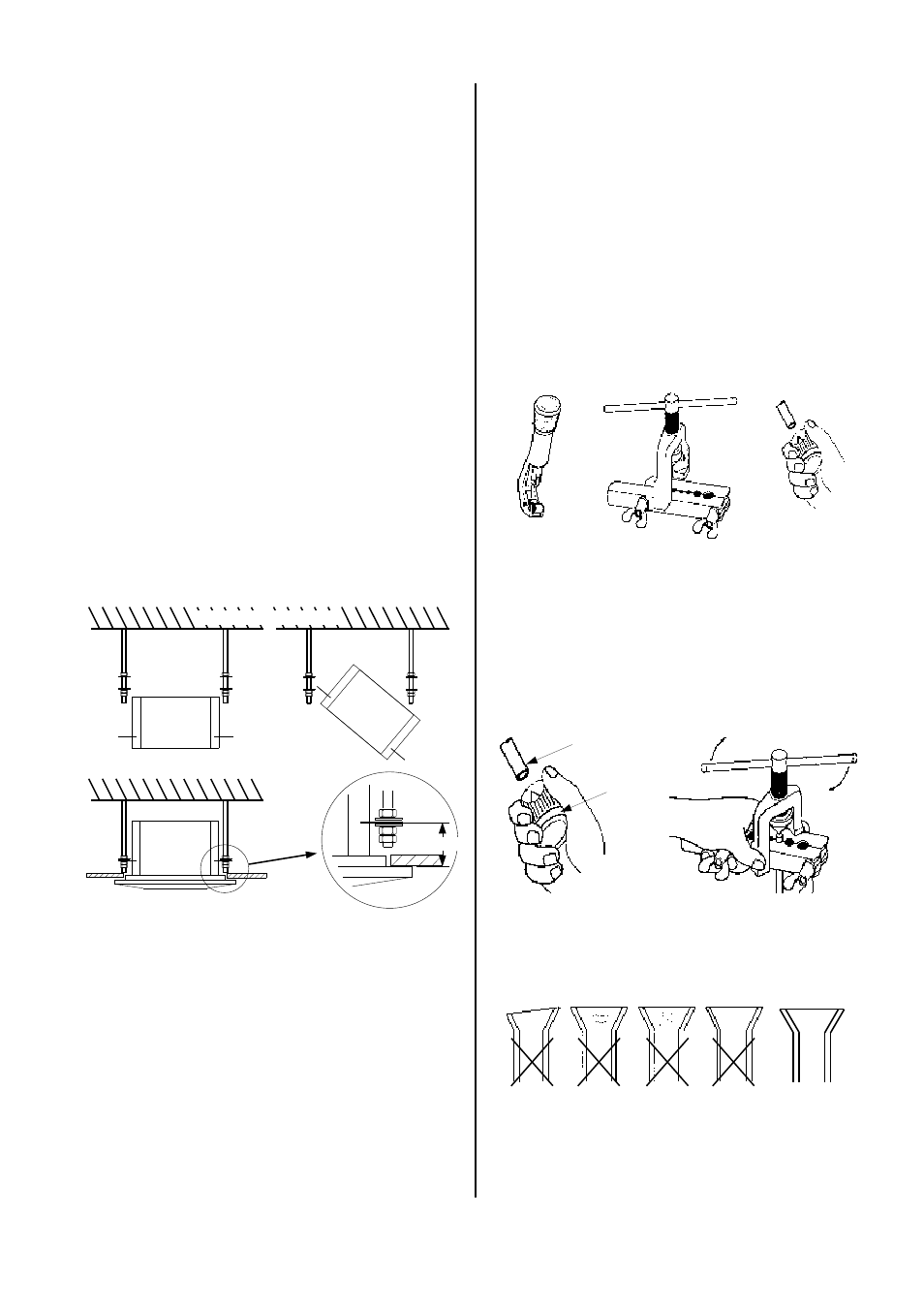Installation – REMKO RKV 13 C User Manual
Page 17

17
Installation
The indoor unit is attached by means of four threaded
rods to be provided by the customer. The supplied card-
board stencil makes it easier to position the holes to drill.
Assembly material
To complete installation from start to finish, the following
materials are required: suitable dowels, trapezoidal sheet
suspension / sectional steel, clamps for refrigerant and
condensation lines (or piping ducts), connection pieces
for the condensation line (sanitary).
Unit installation
The unit is installed on the four threaded rods with the
grating down taking into account the ceiling design and
any possible fixtures.
Determine where you will attach the threaded rods for
the unit suspension mount by holding the cardboard
stencil under the ceiling depending on the position of the
ceiling design and mark the attachment points.
Only attach the threaded rods to statically permissible
building parts above the intermediate ceiling.
If two-room and fresh air connections are to be inte-
grated, mount the appropriate connection pieces prior to
installation.
To ensure that the condensation drains into the collec-
tion tray, insert the indoor units into the threaded rods
and bring the units into a horizontal position with the
lower screws.
Maintain a distance of 75 mm between the bottom of
the suspension mount and the bottom of the intermedi-
ate ceiling (see figure above).
Connect the refrigerant, control and condensation lines
to the indoor unit as described below and check again
hat the unit is positioned horizontally.
Finally, tighten the counter screws and assemble the
grating.
75 mm
Static building part
Assembling the connection line
1. Position the cassette in such a way that all sides are
freely accessible.
To ensure the best air distribution in the room, the
indoor unit should be installed in the middle of the
room.
2. The required line cross-sections are provided in the
"Technical Data” table.
3. When assembling the unit, observe the bending radii
of the refrigerant lines and never bend the hose in
the same place twice.
This may cause the line to become brittle or crack.
4. Use only the tools below for assembly.
5. Remove the preinstalled swivel nuts of the units.
6.
Only use the swivel nuts supplied for further as-
sembly or use the supplied accessories of the
indoor units if necessary.
7. Before you flare the refrigerant lines, ensure that
there is a swivel nut on the hose.
8. Work with the refrigerant lines as shown in the fig-
ure below:
Deburrer
Refrigerant line
Flare tool
G
Only tools approved for use in cold conditions may
be used
.
9. Make sure that the flare has the correct shape.
10. First manually connect the refrigerant lines with the
shut-off valves and the bolts to ensure that they are
in the proper position.
uneven
thickness
formation
of cracks
formation
of cracks
rippled
CORRECT
